
How IoT Will Influence Customer Loyalty Programs in Future!

One of the important sources of competitive advantages nowadays from a service provider point of view is customer loyalty. Many companies are investing in rewards and incentive programs to encourage customer loyalty. But given the ever-increasing competition, keeping customers loyal to your brand is no easy task. So how do brands build trust, drive engagement and create value for their most prized customers in today’s fast-paced world?
The Internet of Things (IoT) can help!
Today there are a multitude of objects and devices connected to the Internet of Things (IoT). The number of connected devices is expected to exceed 40 billion by 2024. Considering the proven value of Internet and such promising growth trends, it only makes sense to ride the wave of opportunities that the IoT will provide.
Let’s see how it works!
Innovate using IoT insights
Creating innovative experiences that remain true to the brand is one way to engage customers. We talk about virtual reality changing the landscape of customer engagement. Let’s see how it works. Virtual reality enables customers to ‘try before they buy’ products online. Now if brands tie this into their loyalty program, what will happen? Their loyal customers will have a richer experience when shopping with the brand, which will certainly move the graph upwards.
Create a new level of personalization
Internet technology can dramatically increase the ability of firms to serve and develop intimate relationships with their customers. Using analytics, brands can create an entirely customized rewards program based on individual customer preferences, history, location and more. Automated emails related to customer actions are a great way to do that.
Gain the necessary competitive advantage
In a rapidly changing competitive environment, skillful use of technology can really help you establish a niche for yourself. Let’s use the seemingly simple mobile as an example. Your customers are connected to their phones, so if you really want to differentiate yourself, use your loyalty program to go where they go most often. An example of this is Sephora’s targeting of those who use their beauty insider app. Their beauty insider app allows for a seamless omni-channel experience where one can browse online, check store selection and pick up in store, all while collecting points.
A word of caution!
The IoT experience is the most exciting technology of this decade. The use of IoT has given businesses the NEW opportunities to interact and engage with customers, as well as introduce never before realized revenue streams. Be mindful, however, of customer privacy. Remember, with IoT we are also dealing with huge amounts of personally identifiable information. IoT is all about data and insight. We must, therefore, ensure that effective consumer privacy protections are in place to protect individuals.
Above said and done, we believe that IoT has the power to change the face of loyalty programs. Given the growing use and acceptance, the loyalty program of the future will offer more relevant, personal and rewarding brand experiences.

Tips to Retain Loyal Customers
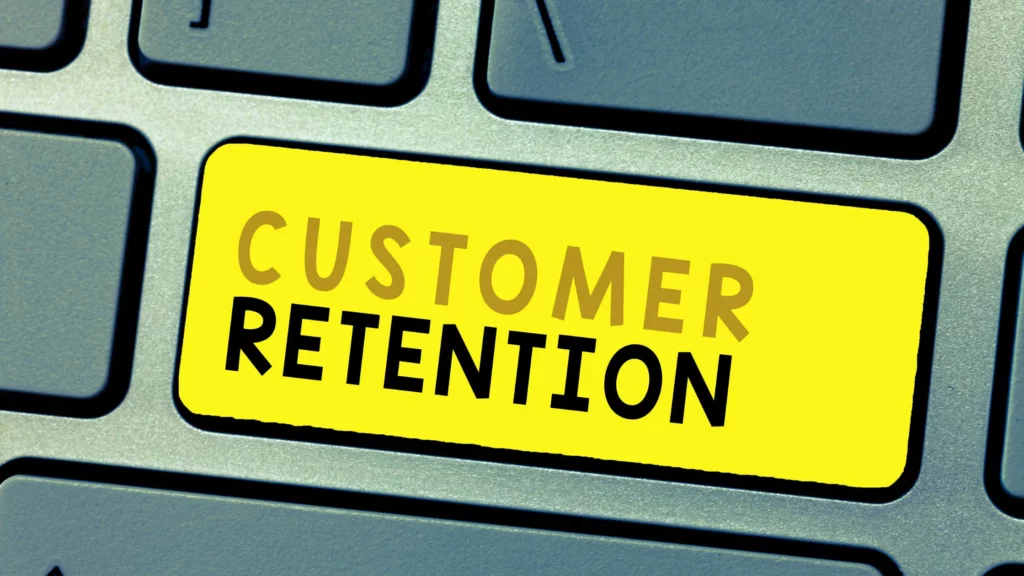
A loyal client is every businessman’s dream. Be it any product or service, spanning the sea of industries out there, a major chunk of strategist’s energy is devoted to acquiring customers and retaining them by all means. Loyalty programs in India are one of important methods used by organizations to reward and retain their loyal customers. While different businesses may need to have specific retention plans, here are a few guidelines from which most of the businesses can benefit-
1. Empathize
Use design thinking 101. Before thinking of various ways to retain loyal customers, it is of utmost importance to empathize with them, get into their shoes and experience the product/ service the same way the customers will.
2. Customer’s Trust
Once a customer is acquired and served well, he is bound to return, since he begins to trust the brand. It is absolutely necessary that this trust is never betrayed. Thus brands should only sell what they stand for and refrain from overselling.
3. Uniformity of experience
Brands should ensure superior customer experience which is uniform across all of their offerings and across geographies as well. A customer having gained a certain experience at one store location would expect the same quality of experience at another store. Differences might mislead and confuse the customer about what truly the brand represents.
4. Real-time CRM and data driven decisions
With so many businesses engaging with their customers online, gathering intricate details about a customer’s needs and preferences has become the trend. Organizations that have the means to correctly mine this data and analyze it can make more informed and accurate decisions, targeting the right customers with the right products.
Data can also be used to predict which of the repeat customers are worth more. Upon segregating into high worth and low worth, customers can be offered customized offerings with preference given to the former.
5. Reward their loyalty
It always augurs well with businesses to reward customers for their loyalty in the form of special offers and discounts. Loyalty programs are one of the most popular tools used by businesses in India. For knowing what kind of loyalty program would work for a particular business, professional consultancy can be taken from loyalty management companies and customer loyalty marketing companies.
6. Customer service and ORM
Businesses should ensure that customers get quality after-service. A disgruntled customer could turn out to be a nightmare owing to the massive reach he can have via various social media. A negative word of mouth could dissuade the acquired customers from continuing with the product or service.

Father’s Day Marketing Ideas

Despite it being a slightly low-key celebratory day, it has gained enough popularity on the social media at least. And hence, capturing a huge section of audience becomes quite easy on different social media platforms. Here are a few ways, you could cater to your employees/audience and market the idea of Father’s day to them:
Promote on Email
Irrespective of your company being the type that celebrates such days or not, or if you don’t specifically cater to the type of audience that does, promoting in-house events related to the day or events that are in correspondence to the same can be promoted within your target audience. Building up on catchy headlines/subjects for such promotional emails are highly likely to attract greater audience.
Team Up
It can be a significantly healthy and fruitful idea to have your company approach local restaurants, eateries, bars and even fitness centers and partner with them and host vents or promote deals and offers that cater to the audience who are likely to be attracted by the same. Some offers such as ‘Bring your dad & the beer’s on us’ or ‘Like father-like son fitness challenge’, etc can prove to quiet a hit amongst younger generations.
Rule on Social Media
Having set up a contest specifically promoting the bond between fathers & children can be a great idea too. Running a contest that encourages people to post selfies of themselves with their father or having to write the funniest incident they shared with their children/father can also turn out to be a successful strategy to grab attention.
Having the winners announced & distributing a promotional voucher or even a freebie of your own brand can do the company a whole world of good.
Spoilt for choice
Making your audience/customers part-take in events organised by you that celebrates father’s day & having fun games and rules set up for the same could be quite interesting.
Partnering with fashion brands or clothing lines can also be an off-beat option but still quite impressive, though mothers are more likely to be interested in the shopping part, but that’s where it gets better.
Your sale/event can have all the members of the family invited and participate in a game that requires them to select pieces of clothing each & the father gets to pick his favorite which can be given to him as a prize or at a discounted rate, etc.
These are some of the fun, interesting and practical ways to market Father’s Day to people in a more economical, interactive and impressive way for a wide range of audience.
Give your brand the edge it needs with RewardPort. Get end to end solutions for all your sales promotion needs! Team up with the best in the business to to make your most loyal customers feel rewarded with innovative loyalty programs that truly make a mark.
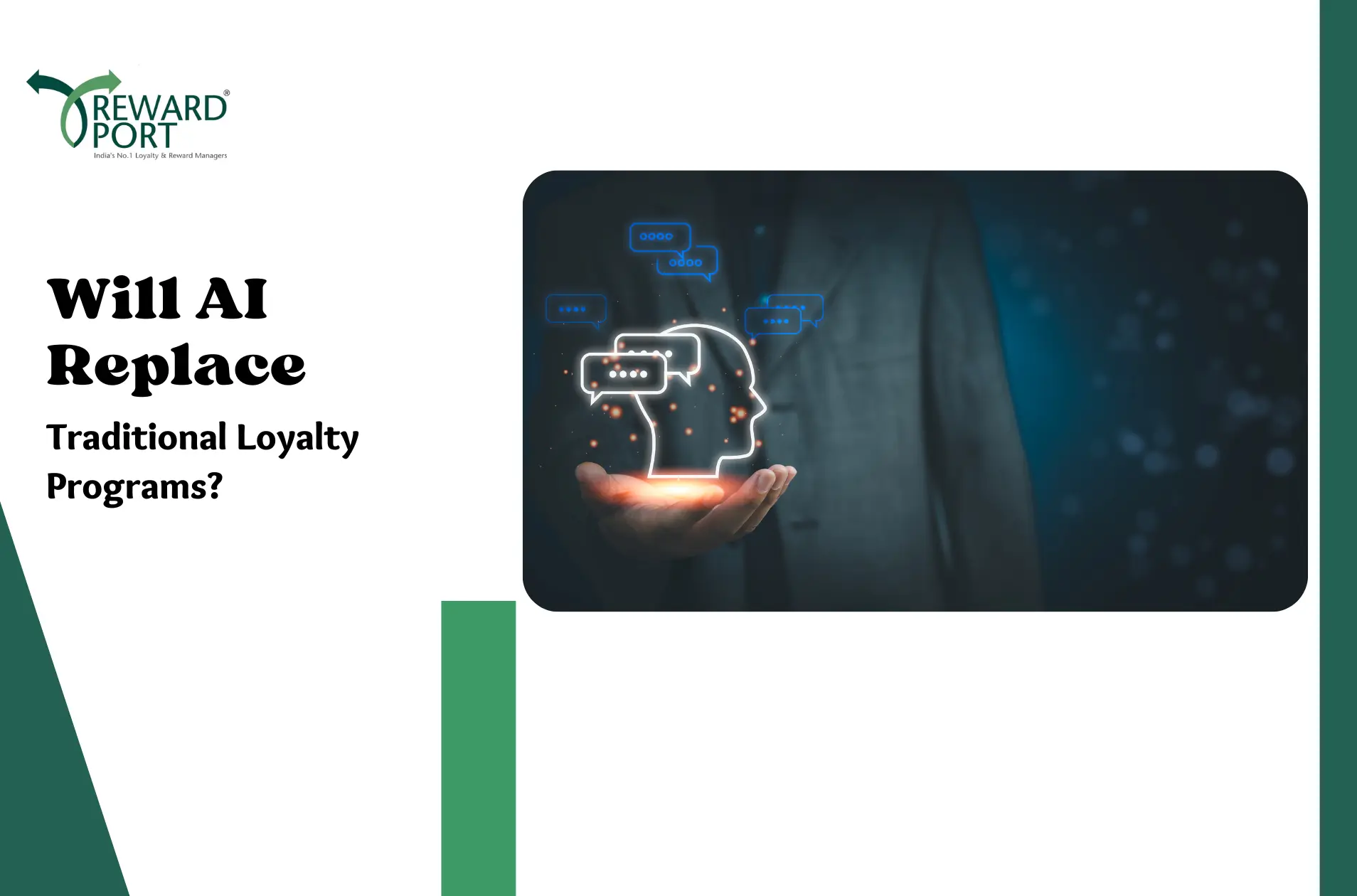
Will AI Replace Traditional Loyalty Programs?
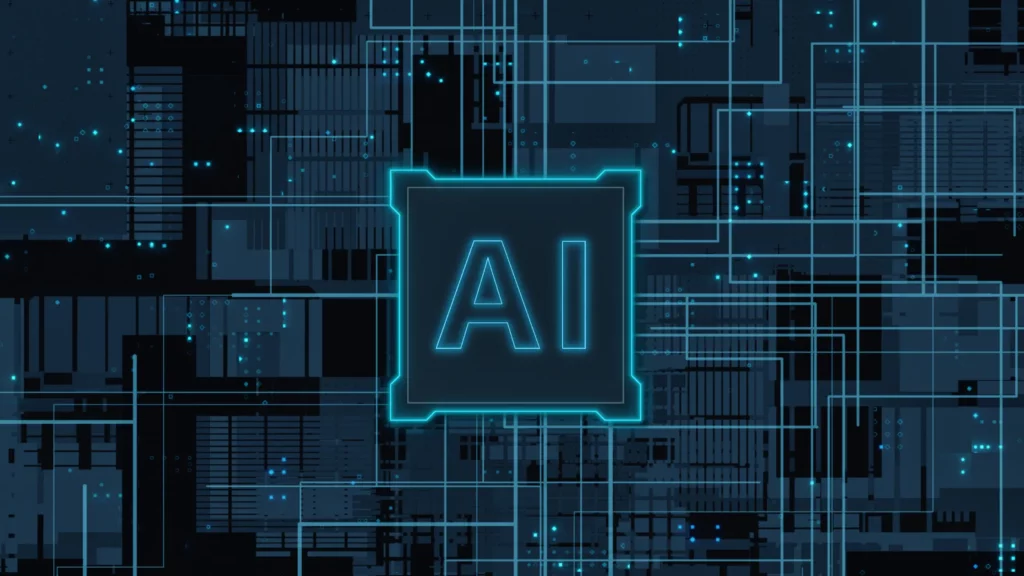
The face of customer loyalty is changing constantly with the increasing cut-throat competition between companies. There are a hell lot of retail options available to customers. So what makes a person choose one over another? And there comes the most basic customer retention techniques- rewards for their loyalty.
They have made themselves as Loyalty Rewards Company – a give-away reward to retain their customers. But is it the future? Do customers really want to be engaged in this way only?
The future is Artificial Intelligence. AI will help in gaining a foothold in this very competitive environment. AI consists of speech recognition, natural language understanding for creating better intelligent assistants. They will help customers with accessing information and completing tasks. AI will result in better business processes and customer orientation.
The urge is there from customer side to make it more personalized and nothing can do it better with Machine Learning, which is a part of AI. Companies like Nectar are leveraging upon the technology giving their customers more personalized offers and they are very successful.
As more customers use their Loyalty Rewards Programs and other digital channels, the better the machine learns about what is relevant for them. Customers are more likely to shop with retailers that deliver more personalized experiences.
Machine learning will totally eliminate the guessing work, it uses the data & analytics to provide the most likely predictions. Loyalty Reward Management programs basically will be utilizing the customer’s prior behavior on certain set of rules.
For example, AI facilitates virtual assistants that can monitor the customers on the basis of their engagement in good behavior and then they could be rewarded for it. This reward would lead to more loyal behavior, and all of this will be done without any human interference. Further, this will significantly reduce the marketing cost since they would be targeting only the most relevant customers.
In the very future only, machine learning and AI would be touching every industry and customer loyalty is no different. A Loyalty program company which will use AI and Machine learning will no longer have different teams working on different campaigns for designing and managing offers schemes and discounts for their customers.
So, with the help of Machine learning, they would not have to push 200 offers to everyone, but to push 20 offers for 20 type of audience which would have a higher conversion rate with low cost.
Also, the ability to deliver real-time personalized offers based on the ever-learning algorithms will completely replace the traditional loyalty programs. AI will disrupt business functions in nearly every industry. Different loyalty rewards companies are heading towards adopting this technology for better retention of their customers.
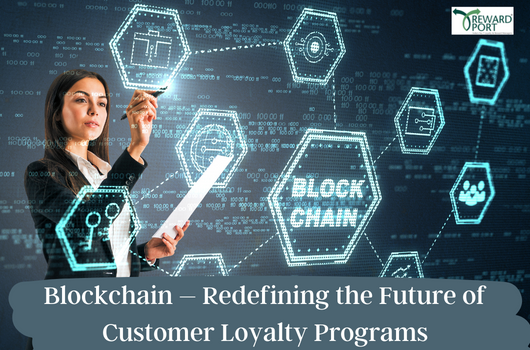
Blockchain – Redefining the Future of Customer Loyalty Programs
Loyalty programs have slowly made their presence felt across travel, retail, financial services, and other business sectors. And since technology is progressive in nature, they are seeking for some kind of disruptive innovation that would turn them more consumer-friendly.
Currently, companies are trying to implement new technologies that would suit their ever-growing needs. Blockchain is the next level innovation in this aspect and according to experts, it will bring the same change to banking what internet bought to media. Blockchain has become the first native digital currency for peer-to-peer value exchange.
It acts like a redemption for consumers since it provides them a single platform to access multiple loyalty programs. For example, imagine keeping only one wallet for all loyalty points and you don’t have to hunt for different options, limitations and redemption rules.
Apart from that, there are a host of benefits for which Blockchain will redefine the future of all financial transactions in near future. Let’s explore.
1. It’s fast
The decentralized approach of blockchain diminishes the complications between buyer and merchant. Many stakeholders make e-commerce transactions unnecessarily complicated by involving parties that makes the process complicated by adding additional function and bureaucratic steps. Blockchain eliminates the need of a centralized authority, so the money can travel instantly in real-time.
2. It’s cheap
Blockchain reduces a lot of costs. All kinds of loyalty and financial transactions run through a lot of complex network of vendors, banks and payment processors.
Blockchain removes all unnecessary third parties by allowing cheap and timeless peer-to-peer transactions. For any online transaction, a consumer ends up paying somewhere around 7% extra which can be minimized by switching to alternative mood of payments.
3. It’s Transparent
Transparency is one of the most salient features of Blockchain. Since it follows a distributed public ledger system, it’s possible to track every bit of information of a transaction.
In e-commerce, marketplaces and brands usually keeps all information by themselves and charges the trader to pass them. Blockchain solves this issue by making all data visible and allows all involved parties to access data for free.
4. It’s secured
Blockchain uses certain security system which is decentralized and immutable in nature. In case of any kind of data loss, it can be traced back easily.
5. It’s easily accessible
Blockchain is digital in nature and by implementing it, a lot of additional costs can be minimized. By nature it’s less costly and has lots of potential to divert people’s minds to purchase and participate in global economy. And since it’s decentralized, the same loyalty points can be used for various purposes.
Blockchain is almost similar to the existing loyalty and transaction programs, except that it is cheaper and faster. In a country like India, it’s still early to declare it as the ultimate redemption for the existing loyalty programs since Indian government has not completely legalized it yet.
But its transparent nature is a major step towards democratizing economy and bringing the power of economy back to people.

How loyalty is acting as a game changer in the e-commerce industry
The e-commerce industry has revolutionised the way consumers think and purchase items. People love to shop online for all the convenience and benefits e-shopping brings with it. Consumers can shop anytime and anywhere for everyday or luxe products, save fuel cost, avoid traffic jams, and bypass crowded payment queues.
The list is just endless. On top of that, a good customer loyalty program — that is simple to access — keeps the customers motivated and hooked for a substantial period of time.
The old patterns of consumer behaviour do not hold true in today’s digital age. So a customer loyalty program, that is constantly evolving according to millenials’ demands and industry trends, is definitely the way to go. A successful loyalty program depends on how effectively the consumer data is studied.
With the right approach and proper discipline, a set of new benefits excites customers to shop at a reasonable cost. The old benefits, that are no longer serving any purpose, are eliminated from the program.
A game-changing loyalty program not only leads to an increase in sales but also results in new customer acquisition and better reputation for the business. A better brand image is definitely a good sign for overall business operations.
According to studies, it is the idea of a reward that makes most customers happy. The idea of saving money only comes after that. Since any great loyalty brings with it new customers and ups the sales, it helps the brand to reduce marketing costs to a great extent.
On top of that, existing customers are far more likely to buy from the same brand again and again. Therefore, to keep them loyal is far more handy than to target new customers.
Also, since these customers are already familiar with the company’s products and services, they are more cost-effective to serve! Reduction in cost to company and honest feedback are the two things that a business can rely on their loyal consumer base for.
Although many e-retailers understand the concept of customer loyalty fully and how important it is, many of them are lacking in effort for a sustained loyalty program. So there seems to be a disconnection. Still others don’t keep an accurate tab on how these programs are performing, even after they have been set into motion.
The idea is to recognise the prime market and construct a plan that makes new customers loyal and keeps the loyal ones excited and looking forward to the brand’s new products. This has also proven to be helpful in beating competitors — that serve the same products and services — thereby gaining an edge over them!
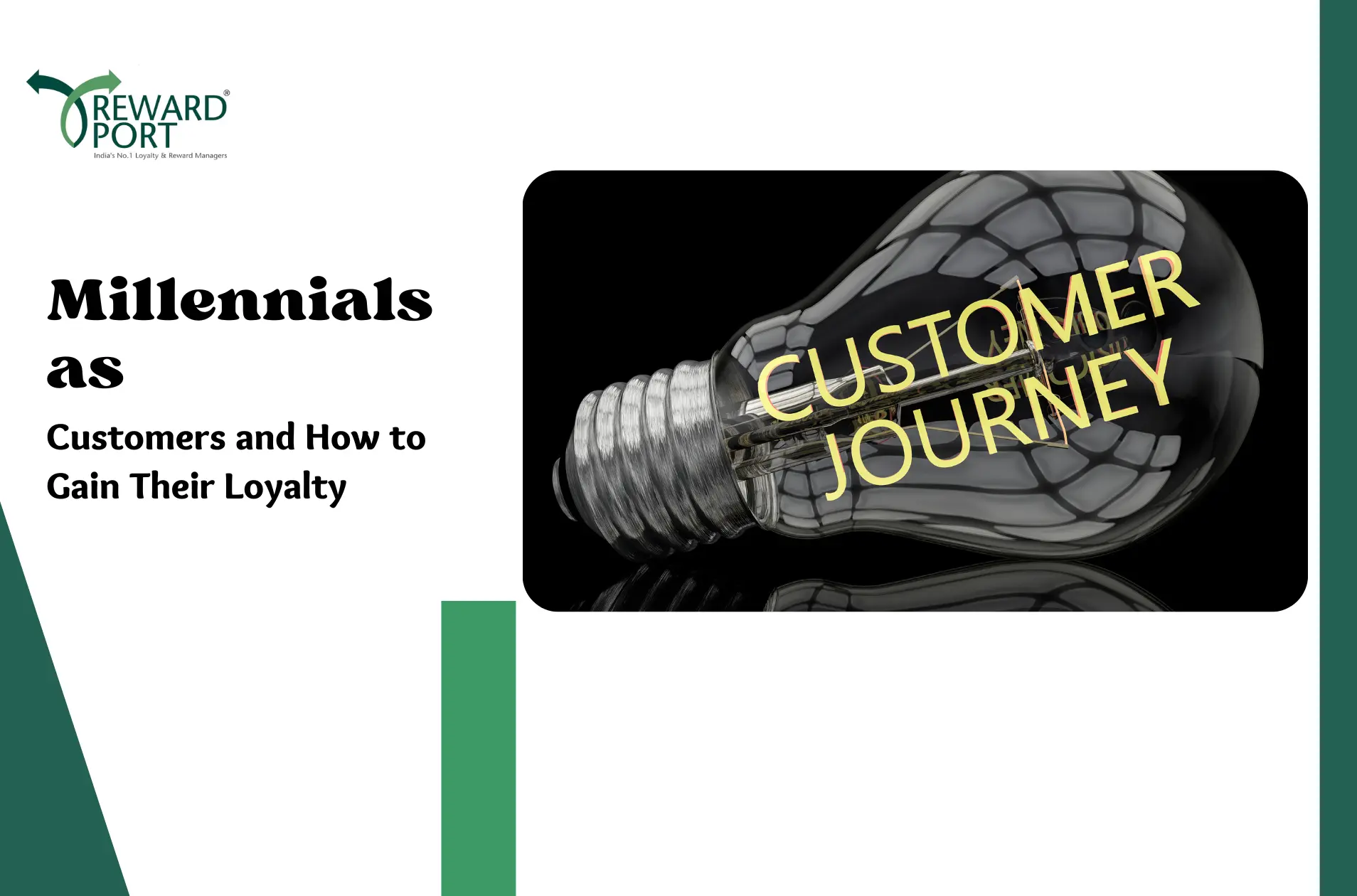
Millennials as Customers and How to Gain Their Loyalty
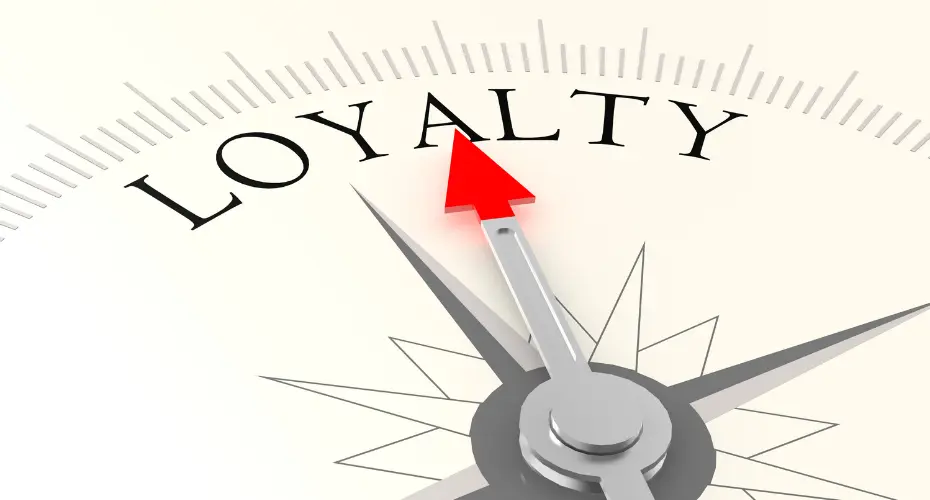
It is the age of the millennials — also commonly known as the Gen Y. This savvy generation not only comprises smart customers, but also include decision makers in top firms.
Holding the largest share in the consumer marketplace, they have taken it hands on to change the rules of how brands engage and conduct their customer-experience design. It’s both easy and difficult to gain millennials’ loyalty. But the job is half-done once their tech-savvy psyche is grasped!
1. Customer-facing technology can’t be slow or complicated
Millennials have always embraced and aligned themselves with technology. So a user experience that is not friendly, simple, fast and advanced, is generally frowned upon by consumers. Companies should be careful not to present an obsolete process or a complicated system to consumers that will keep them away.
2. Smartphones have been the norm for millenials
Millennials are used to getting everything immediately and experiencing everything in real time. The queries need to be attended to as soon as possible and in an authentic language; otherwise, the customer moves on to someone else who understands him/her more.
3. Purchasing, for millennials, is a social experience
Engaging on social media is a part of everyday life for millennials. Often, these posts concern their consumption activities, their next purchase or what they might be looking for. This greatly affects businesses — as the opinion and review of one consumer could influence another.
4. Millennials seek an authentic and engaging experience
Which is why the company website should include a FAQ page — how to go about making a purchase, detailed repercussions of what could go wrong, or any sort of guidance. This can be done either through articles or videos — where customers can discover quick-fix methods and find instant solution to all their problems.
5. Interference or help from customer care is considered tedious
This means that they are self-reliant too and do not need customer-care executives getting in the way, just to mess up their whole experience. More often than not, they would prefer self service.
6. Surprisingly, they also want to co-exist
They’re open to new experiences and want to associate with the brand more than with just a transaction. To speak plainly, millennials are adventurous and seek the same from the brand. For example, a cause supported by a favourite company would also be supported by the loyal customers.
The bottom line is that — nothing with the millennials can be taken for granted. The skeptical approach of the previous generations also needs to be done away with. They move fast, like to experiment and are prone to changing loyalties only after one bad experience. It would also be good to know what the target audience is, in order for customer service to be innovative, seamless and top-notch on the whole.

The Growing Needs of Social CRM
Customer Relationship Management
This is the name for any system or model, accustomed to manage a company’s interactions with its current or future shoppers or customers.
This system could be a piece of technology designed to manage, organize, change and synchronize the entire client-facing areas in your company — from sales and marketing to client service and technical support.
It offers you time to develop the different areas of your business, while providing you with the assurance that you’re not losing your existing shoppers. It helps you in responding to new inquiries in an economical manner.
It also permits you with the time and freedom to target different areas of your business, while you are assured with the knowledge that an automatic system is keeping you and your team up-to-date and totally conscious of your clients’ needs.
There are more advantages of adopting a great CRM . As of now, simply keep in mind that keeping the client at the soul and heart of your business strategy is that the key to success.
CRM in the social world:
Of course, ancient channels like telephone or email aren’t any longer the sole channels, whenever conversations between the company and client happen. People are contacting brands for everything — from general queries to compliments and complaints via social networks.
The digital world is getting complex and we’re seeing a lot of broader fragmentation in the way that customers are using different channels.
It makes things terribly difficult for the client service team. Customers hop across varied channels so as to complete even the simplest of tasks, whether or not it’s shopping for merchandise from a brand or checking the opening hours of a retail shop.
However, chances are, all the channels are operated by different folks with different agendas and priorities. It’s entirely easy for a client to move across channels and have a totally different experience with each channel.
Therefore consistency is a must.
Early days of social media
Here’s a neat summation of the early days of social media.
As social media channels became popular, they were embraced by users to support conversations with brands and different customers. Customers were not passive recipients of data. They had unrestricted access to data and content from their peers.
Brands had no direct management over these conversations and would, at best, intervene in them at an opportune moment, e.g. create a post during a forum discussion thread.
The default communication dimension was client to client and therefore the primary goal of the social CRM model was engagement, resulting in an increased customer experience — with a deal being a secondary consequence, not the first goal. The shopper was currently in full control.
It simply goes to point out why it’s a must for each brand to observe mentions of itself on Twitter.
Current days of Social CRM
Brands must incorporate social media into their CRM strategy in response to their customers’ adoption of the same.
Social interactions might not directly lead to immediate conversion. However, they can promote engagement which will indirectly generate leads, produce authoritative relationships and build confidence within the brand, eventually driving future sales.
Every touch point should be recorded in a CRM system. Thus, all the knowledge concerning any last purpose of contact, notwithstanding channel, is created out there to anybody at within the organization.
Differences between CRM and social CRM
Understanding the variations between social CRM and traditional CRM models will facilitate marketers’ approach toward the social CRM program style.
Best practices of social CRM
Social CRM is regarding client engagement, not management, because brands and marketers are not in control of conversation anymore.
Social CRM thus sees a shift — focused from sales to relationship-building conversations — lead by a belief that enhanced client experiences with engagement can ultimately drive sales. The key to success is to give the choice to shop for as a secondary instead of the first focus.
Use the regular contact opportunities afforded by social media as a way of staying somewhere close to the front of customers who aren’t ready for purchase yet.
In the meantime, keep them engaged with helpful, valuable content and knowledge. Keep in mind that ‘valuable’ will mean many various things though. Amusing, academic or informative content is effective. A fast response to a relevant question is effective.
Connecting customers with people or brands which will be relevant can even be valuable. And something that may either make a shopper feel special or save him time, cash or problem will definitely foster a deeper sense of brand name loyalty.
Social CRM is regarding being patient and organized. Customers take smaller steps down the sales funnel. However, the long-term gains are often far more rewarding.
This is clearly a totally different sales model to the normal sales-orientated processes. The foundations of engagement are modified by social media because of its omnipresence in people’s lives and therefore the expectations that have changed with it. Grouping social together with your existing CRM strategy can mean your company matching those expectations and hopefully surpassing them.
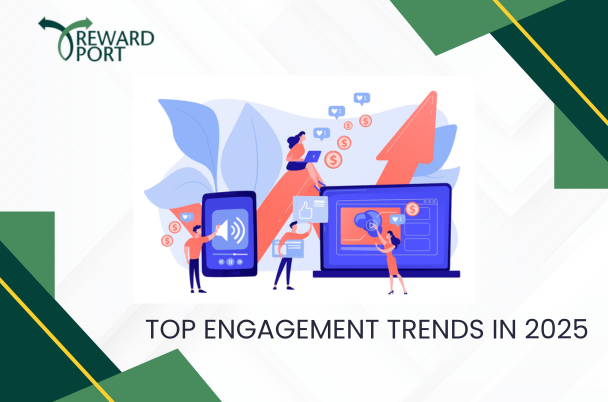
Top Engagement trends in 2025
Businesses try to learn from their past in order to bypass the mistakes made, they look to the future for adapting possibilities that would make the customer happier and improve the overall experience of dealing with the brand.
Customer awareness is ever increasing; make-believe things are quickly Googled to check for its legitimacy. Easy access to information has made the customer search for experiences that are out of the ordinary.
As we look to customer engagement trends coming up in 2025, we need to remember that the customer is a brand in and of themselves. For success, we need to ensure our brands are complimentary to theirs.
1. Personalisation is key
The need for personalised brand interactions is on the rise. Customers feel more valued if the brand has personally had an interaction with them. This value will be measured in terms of brand success and loyalty over the next year.
Customers already expect to be treated as individuals with specific preferences and that trend will become more evident over the next year. The need for the brand to understand and anticipate customer’s needs is going to be ever-increasing. All this seems like a big task for the brands to deal with, however the answer to this question is BIG DATA.
2. Multichannel is to become Omnichannel
Companies have to respond to the ever changing market demands. The current market is dominated by the Millennials, with the future in the hands of Gen-Z.
Both of these generations have grown up on the basis of the internet. Hence, instant gratification is a necessity.
Having an Omnichannel presence will improve the company’s customer engagement as the audience they cater to more ways of accessibility.
“Did you know? According to Marketing Week, 15 years ago the average consumer typically used two touch-points when buying an item and only 7% regularly used more than four. Today consumers use an average of almost six touch points, with 50% regularly using more than four.”“According to PWC, the demand for an omnichannel customer experience will be amplified by the need for nearly perfect execution by 2020”
3. Pro-active Customer Engagement
Debenhams, a large retailer applies a proactive customer engagement approach:
Delivery of in-depth content to inform customers before they decide to make a purchase.
How? They display a vast variety of information on their website that answers frequent questions — from guides on beauty and size guides, as well as home furniture & more.
This doesn’t just help the brand in its SEO strategy, it also helps to trim the overhead costs of returns and support while helping the customer maximizing delight in terms of experience.
4. Internet of Things (IoT) is going to be an integral part of Customer Engagement
“70% of retail decision makers globally are ready to adopt IoT to improve customer experiences”
5. Machine Learning
Machine learning allows computers and devices to learn from experience without any specific programming. Think of it as a seasoned psychology professional that knows your traits. This is done through buying behaviour and browser history.
One example of machine learning is by Netflix. The popular streaming service dishes out movie/show recommendations based on a few titles that you select while signing up. Surprisingly enough these titles are very much what the audience is looking for! How?
Machine Learning’s Predictive Functionality. Based on customer feedback, ratings and browsing habits, the algorithm makes a predictive decision. The customer experience is vastly improved by such pro-active efforts which result in the customer being engaged with the brand.
Machine Learning in 2025 is expected to rise on all accounts. An ever-increasing number of companies are adapting this technology to improve customer experience and make machine learning a friend in need in the virtual world.
To Conclude:
Customer experience is to be vastly improved in 2025. Through personalisation and implementation of various advances in technology, companies are trying to win over the customer. It is to be seen how the customers react to these trends and if brand loyalty will gain a stronghold due to improvements in customer experience.

Top 5 Trends That Will Drive Sales in 2025
Sales – The word doesn’t go well with many of us. It has the tendency to pull our attention towards a lot of never ending hard work to attain a certain amount of desired result. Not sure how many of us would agree on this but every single job is somehow related to sales.
We are either getting paid because someone is selling products made by us or we are selling some products made by someone else. Believe us or not but sales are as important as the air we breathe. And with every passing year, it has been becoming more progressive.
What’s in store for sales in 2025? Videos replacing text in emails, increased focus on sales training, the rise of micro-influencers, messages replacing calls – there are many things to look forward to. Let’s find out.
1. Automation, AI, and Machine Learning
Advancements such as email intelligence are already making the sales process more efficient and it is likely to continue in 2025 as well. Big data is slowly changing the way business decisions were made earlier. There is advanced machine learning training that works on success outcome data and can help train sales development representatives(SDRs).
Their conversations can be recorded, translated, transcribed, and presented to their managers. With so much new technology merging into sales, it will be possible to figure out metric-centric selling to analyze each sales-based role and turn focus into more customer-centric approaches.
Bosch have sensors embedded in their washers and dyers. And they can actually alert the service center when some application is not functioning.
2. Hyper-Personalization
Personalization is rapidly becoming an essential part of sales and marketing. With the constantly increasing competition, brands are always looking for new ways to attract and engage customers. Hyper-personalization becomes an important aspect when it comes to customer engagement in 2025.
By offering personalized rewards and experiences, you can make your customers feel valued and encourage them to spend more on your brand. You can segment your customers based on their interests/buying behaviors and offer personalized rewards to each segment to ensure that every customer feels valued and appreciated for their purchases.
3. Rise of subject matter experts
Subject Matter Experts (SMEs) are changing the way businesses and consumers interact with each other. Modern customers don’t communicate through traditional mediums of communication when social media revolutions are in full swing. These days consumers check your social media pages first and then go to your website.
And if you don’t know your pages inside out, chances are you losing a large number of your prospective customers. SMEs, such as digital marketing specialists, can help you with deep insights and value selling. They are worth hiring and they can provide you a deep understanding of the solution landscape.
4. Customer Relationship Management (CRM)
It’s 2025 and the ‘one for all’ type of strategy doesn’t work anymore. Customers now need personalized experiences. The concept of CRM aims at gaining long-term oriented customers and it’s hugely technology driven. The primary focus of CRM is on customers rather than products.
For example, bonus points, collective numbers, and cash back options are offered to improve customer experiences and engagement rather than just selling products. Good customer experience will itself bring you more sales.
5. Videos replacing texts on mails
Video/GIF prospecting emails have been used in B2C communication for a while now but marketers never used them in a terribly targeted manner. AI is helping B2C sellers to send video-based sales emails to get through hard-to-reach decision makers working in SMEs and business houses.
Marketers are using videos to split-test among a vast list of subscribers or landing page visitors.
6. More focus on micro-influencers
After a few targeted aggressive selling from top influencers, advertisers have started to niche down and find more customer centric approaches to get products in front of consumer’s eyes. Big influencers are always concerned about who and what they recommend since they don’t want to turn off any of their followers. Thus, they leave the doors opened for micro-influencers to enter.
It is still early to predict the upcoming future since technology is ever progressing. But whatever it will be, staying updated with new updates and trends should be the main focus for every organization to drive sales.
Using traditional methods would be a failure if you don’t implement AI and machine learning in analysis. With social media platforms introducing new features such as live video streaming, and video carousel ads, the competition will become more intense.
Achieve Your Sales Goals With RewardPort
RewardPort is a leading rewards and loyalty solutions company that helps businesses boost their sales and revenue by improving the experiences of different business prospects, including customers and channel partners. The team of marketing experts at RewardPort can help you design effective sales promotions or loyalty programs for your B2B or B2C customers. The team ensures that your program aligns with your marketing goals for maximum effectiveness.
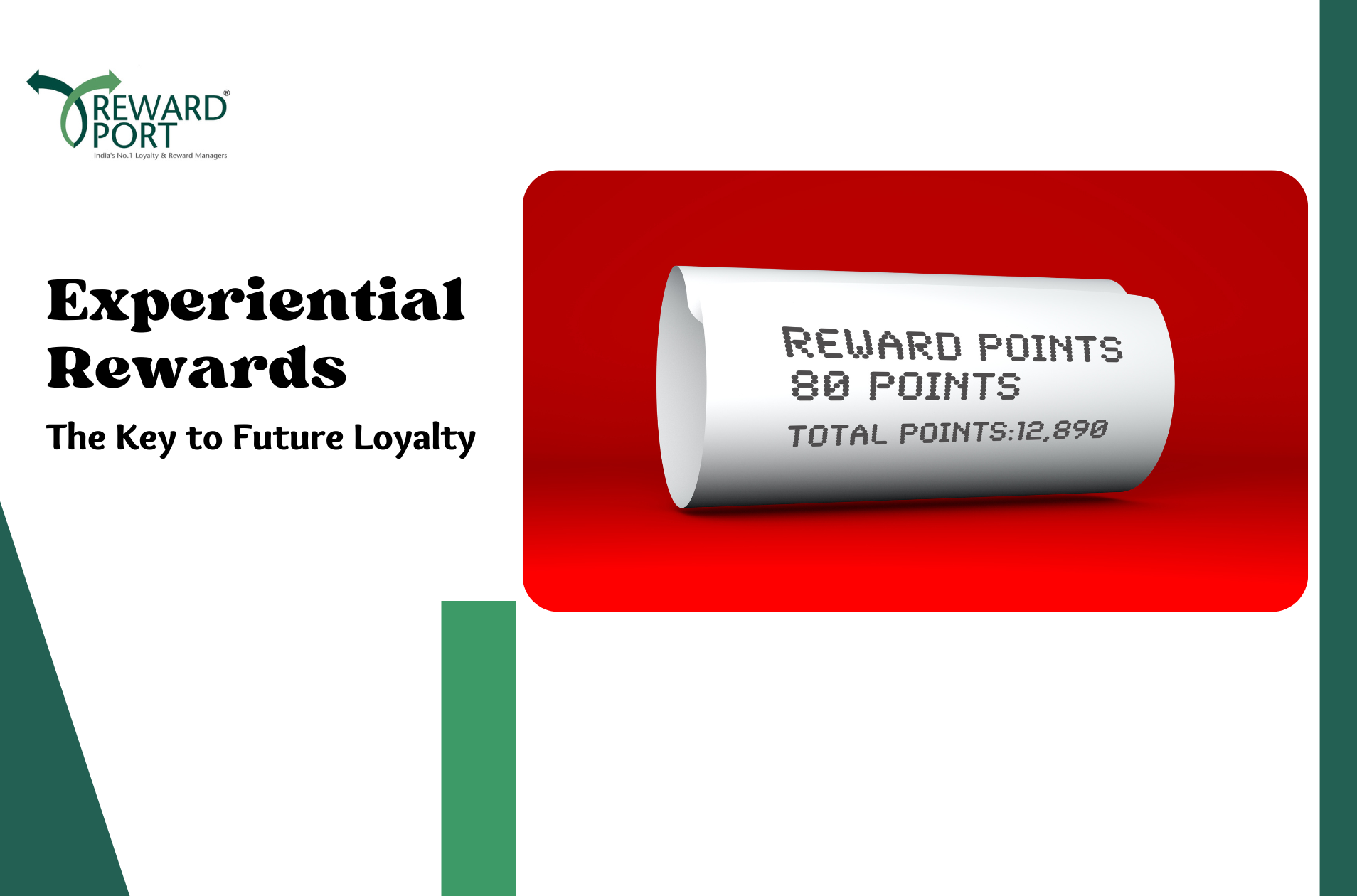
‘Experiential Rewards’- The Key to Future Loyalty

A memory can be a very powerful thing. Our lives are defined by our memories, the experiences that we have. These experiences count not only in our personal lives but also in our professional ones. Loyalty programs have long been a practice of materialism; however, the trends seem to be changing. The key is the term “experience”.
No matter the industry you belong to or are interested in, everyone seems to be discussing this somewhat subtle way of rewarding your best customers.
You probably don’t remember how you spent that last bit of cash in your wallet (groceries, diapers, gas for the car?) but you do remember that first time you got up on water skis, or that gorgeous sunset from your last beach vacation, or the time you sang your favorite song at karaoke and actually killed it
Almost everyone has taken a picture of a meal and posted it on Instagram, Snapchat or Facebook in the last month. That’s sharing your experience with your social circles—and in a small way, makes you part of the experience economy. The experience economy was coined in the late 90s but continues to remain relevant—even more so today based on other economic changes.
The experience economy occurs when a company intentionally engages individuals in a way that creates a memorable event. That includes consumers like in the example above and extends to all people you’re looking to engage and motivate.
Let’s take a closer look at why experiential rewards are the way forward:
1. Personalization Is Key
Personalization is tailoring a service or a product to accommodate specific individuals. With the emergence of artificial intelligence and other machine learning capabilities, consumers expect to be treated like the individuals they are. The more we know about our customers, channel partners and employees, the easier it becomes to offer rewards they trust and value.
Put yourself in their shoes.
How do they want to receive rewards?
Is it a digital experience?
Do they prefer a gift delivered to their home where their family can take part in their achievements?
These are just a few examples of the myriad of ways we can stay in touch with participants today with the reward experience.
2. Experiential rewards are personal and become part of our identity
We enjoy telling stories. Above all, experiences help to create stories which are inherently shareable. The human brain is wired to compose, remember, and share stories. And so, a reward or a recognition ceremony that lends itself to a story is more likely to be shared and remembered.
Who would not find it interesting and comfortable to share stories about a recent vacation, a hand-pottery or night-trekking experience, vs. their last purchase? The stories that a unique or indulgent experience can generate, might even become a part of your organization’s lore, gaining a life far beyond the actual award itself.
And in fact, experiences also offer high social currency, photos or videos for social accounts of the millennial workforce. Studies show that millennials prefer experiences over consumer goods.
3. Experiential rewards although by nature are short-lived but create healthy long-term happiness
There is actually a hell lot of difference between offering a discount and handing over a customized gift worth to your customers. Though the monetary value of both the rewards is same, the experiential value is significant in the latter case. Simply because you are giving them what they have been aspiring to the most. Apart from creating a huge treasure trove of memorable experiences, it is making their lives a tad better in terms of happiness.
Ultimately, the power of experiential rewards is the combination of inspiration and aspiration. Experiential rewards inspire your best customers by giving them positive associations that last much longer than a transactional reward.
These unique, shareable experiences will also help you build a brand community that gets customers excited, expanding your marketing reach and further solidifying the idea that your brand really is the ultimate solution.

5 Loyalty Trends to Look Out for in 2025
Planning to introduce new loyalty programs for your customers in 2025? You may want to consider the ones listed below in this blog.
We have witnessed significant changes in the loyalty program landscape in recent years. Digitization changed a lot of things a few years ago and now the rise of AI and Machine Learning technologies is reshaping the way customer loyalty works. Gone are the days when a huge newspaper ad could convince your consumers.
A new age of business has emerged and it has been bringing remarkable changes in every aspect of modern marketing ethics. When information is easily accessible everywhere, you can’t sit back and wait for your consumers to knock on your door.
You need to be one step ahead to maintain long-term consumer loyalty. The line between the public and private sectors is slowly evaporating and everyone from SMEs to big corporate honchos are trying to introduce new and technologically advanced loyalty programs to attract their consumers.
The future looks innovative and if you are planning to introduce a new set of loyalty programs for your consumers then you must check the following 5 trends.
1. Transcendental Consumer Experience
New-age consumers don’t want to purchase a product, they want to experience it at a personal level. Lives are moving at dizzying speeds and people tend to forget things that aren’t right in front of their eyes.
Being present and constant in day to day life has become important and consumers want to be addressed as the same person by the brand across all channels of communication. Brands have started realizing the fact that they need to become their client’s friend through their e-commerce, social media pages, and loyalty platforms.
You need to count each and every available information about your consumers and create a personalized out-of-this-world experience that will make them feel special and eventually, it becomes easy for them to remember you.
2. Careful Utilization of Visual
Every social media platform has started its own live–streaming services. Be it X (formerly Twitter), Facebook, or Instagram. Visuals will surely replace the static mode of communication in the foreseeable future. But you need to utilize it carefully since the competition for scrolling content is getting fierce.
With ads popping up in almost every network, advertisers are living in a fear of ad fatigue. We recommend using short and crisp videos that don’t trouble the viewers.
3. Impact of Machine Learning
Currently, businesses are using machine learning for four different purposes. To create user-generated content, to build meaningful conversation with consumers, to predict consumer behavior and to help consumers find products.
With a rapid generation of data and the capability of massive computing power, machine learning has become the most useful way to detect anomalies. Machine learning is very useful to gather appropriate data, and introduce personalized reward points for your consumers. It helps gather accurate information in real time.
4. Instant Rewards Points
We know alerts are annoying but no one can deny the impact of reward point texts from their favorite shopping destination. Millennials and Gen Z people are not just looking for high-quality products, but also good experiences.
They always tend to question the traditional ways and prefer notifications more than calls on their phones. For example, a push notification to remind insurance renewal is necessary but 20% cashback along with the renewal is an attractive prospect.
5. Travel Experience as Reward Point
Just go through recent promotional offers by 10 different brands, and you will find at least four of them offering luxury gateways to their consumers.
Millennials and Gen Z people are experimental in nature and they are always ready to explore a new place. Traveling has become easier than before and short city breaks appeal to consumers more than cash reward points.
Why Choose RewardPort?
Technology and the internet have played vital roles in changing the course of a business in recent years. Don’t hesitate to hire someone if you don’t know the current trends and updates. Your consumers are smarter than you and they know how to explore the market. Partner with RewardPort and get your loyalty programs aligned with the interests of your customers.

